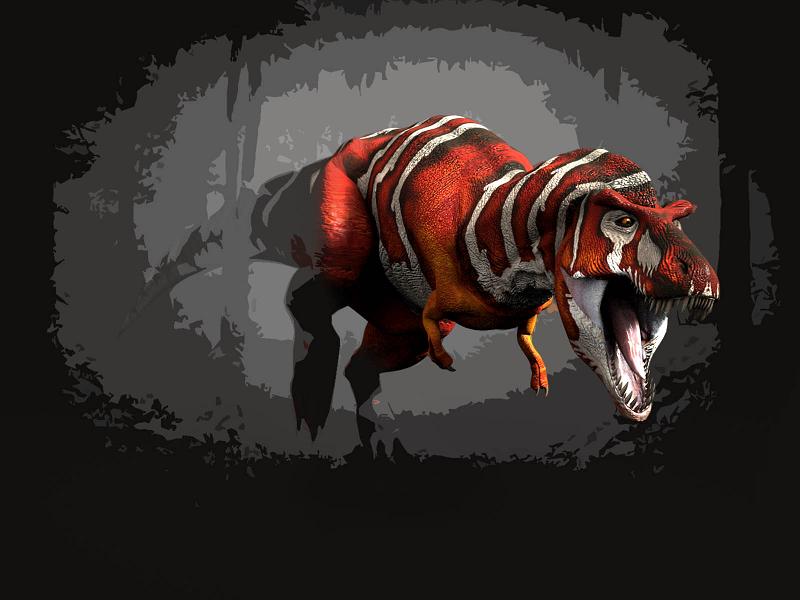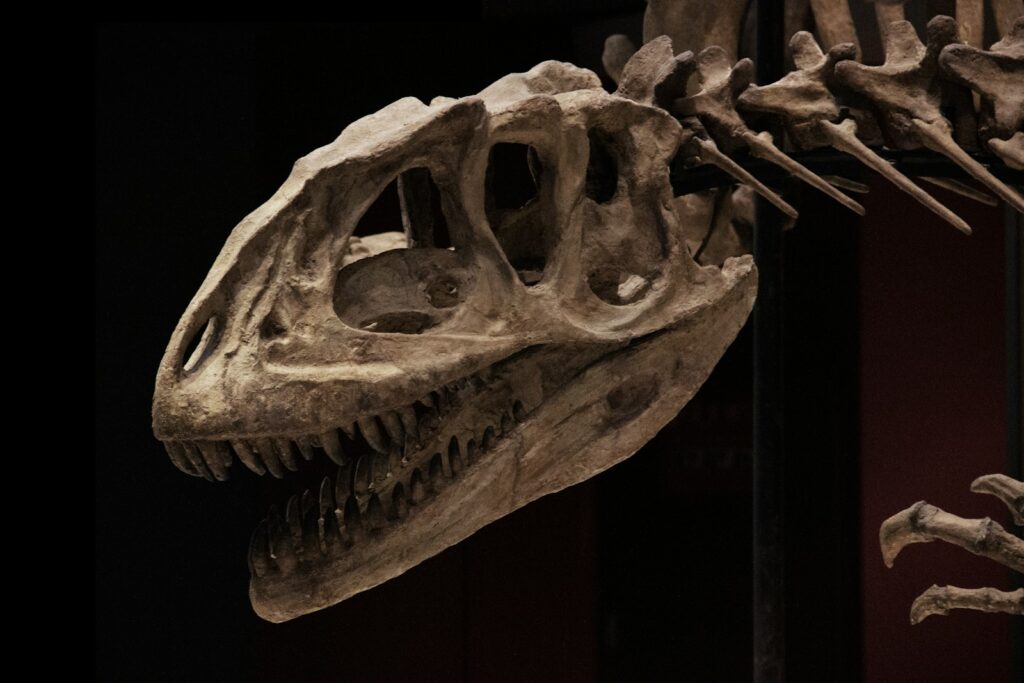Imagine standing in a tropical rainforest where massive ferns tower overhead and the air steams with humidity – except this isn’t the Amazon, it’s Antarctica 100 million years ago. Picture colossal dinosaurs trudging through snow-covered landscapes, their breath forming clouds in the frigid air. These aren’t scenes from a fantasy movie; they’re snapshots of Earth’s tumultuous climate history, where ice ages and greenhouse worlds alternated in a dance of extremes that shaped life itself.
When Dinosaurs Met Ice: The Reality of Ancient Climates
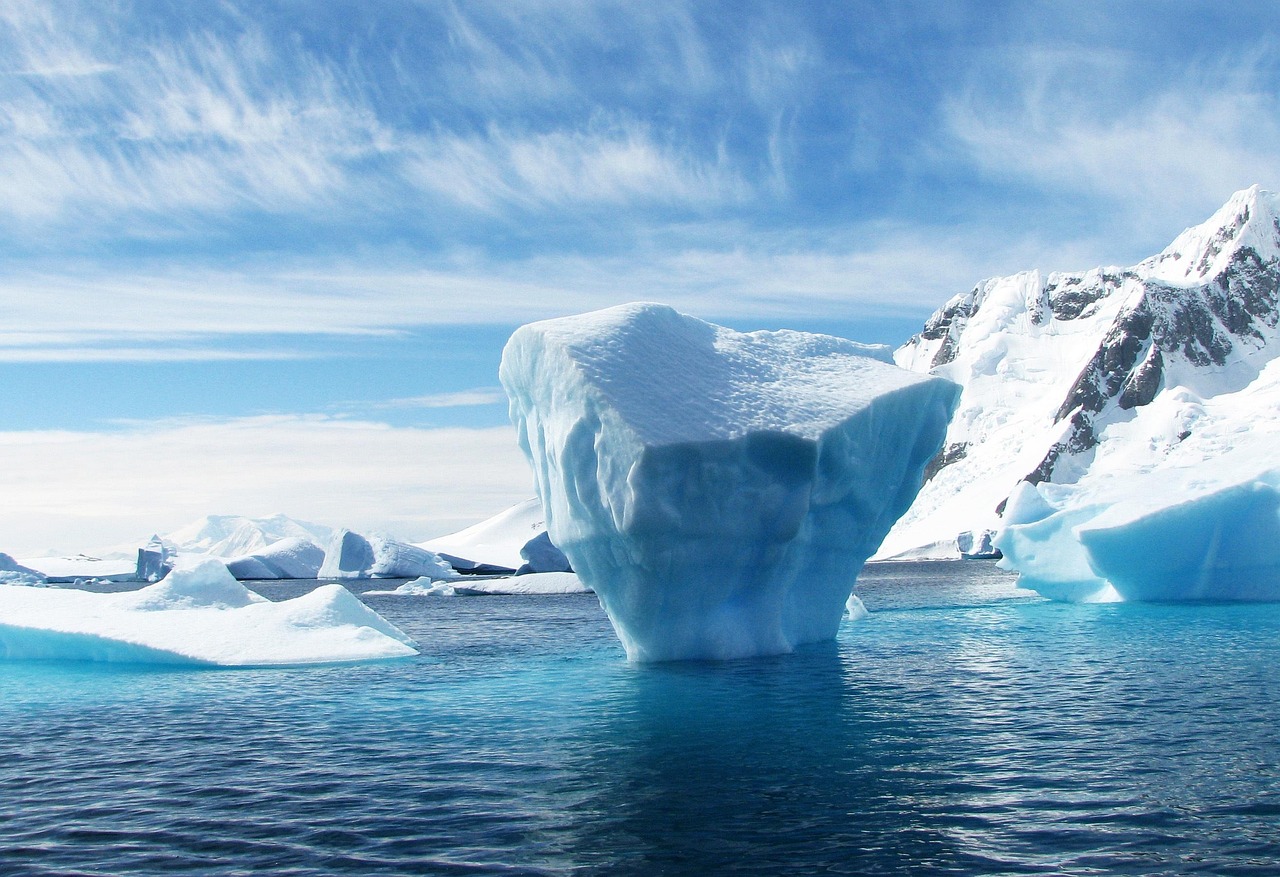
The popular image of dinosaurs basking in perpetual tropical warmth is only half the story. Throughout their 165-million-year reign, these ancient giants experienced climate swings that would make today’s global warming seem like a gentle temperature adjustment. Some species actually thrived in environments so cold that frost formed on their scales each morning.
Recent fossil discoveries in Alaska have revealed dinosaur remains in rocks that formed within the Arctic Circle. These weren’t just brief visitors – entire ecosystems of cold-adapted dinosaurs lived and bred in polar regions. The evidence suggests that some species developed feathers not just for flight, but as insulation against temperatures that regularly dropped below freezing.
The Great Permian Freeze: Life’s Ultimate Challenge
Before dinosaurs even existed, Earth experienced one of the most brutal climate events in its history. Around 280 million years ago, massive ice sheets covered much of the southern hemisphere, creating a world so cold that even the tropics experienced regular snowfall. This wasn’t just any ice age – it was a climate catastrophe that pushed life to its absolute limits.
The Permian ice age lasted for millions of years, fundamentally reshaping how life adapted to extreme conditions. Creatures developed antifreeze proteins in their blood, similar to what we see in modern Arctic fish. Plant life retreated to small pockets of warmth, creating evolutionary bottlenecks that would influence species development for eons to come.
What makes this period particularly fascinating is how it ended – not gradually, but in a dramatic flip to one of Earth’s hottest periods ever recorded. The transition was so rapid that some scientists believe it contributed to the Great Dying, the most severe extinction event in Earth’s history.
Polar Dinosaurs: Arctic Survivors
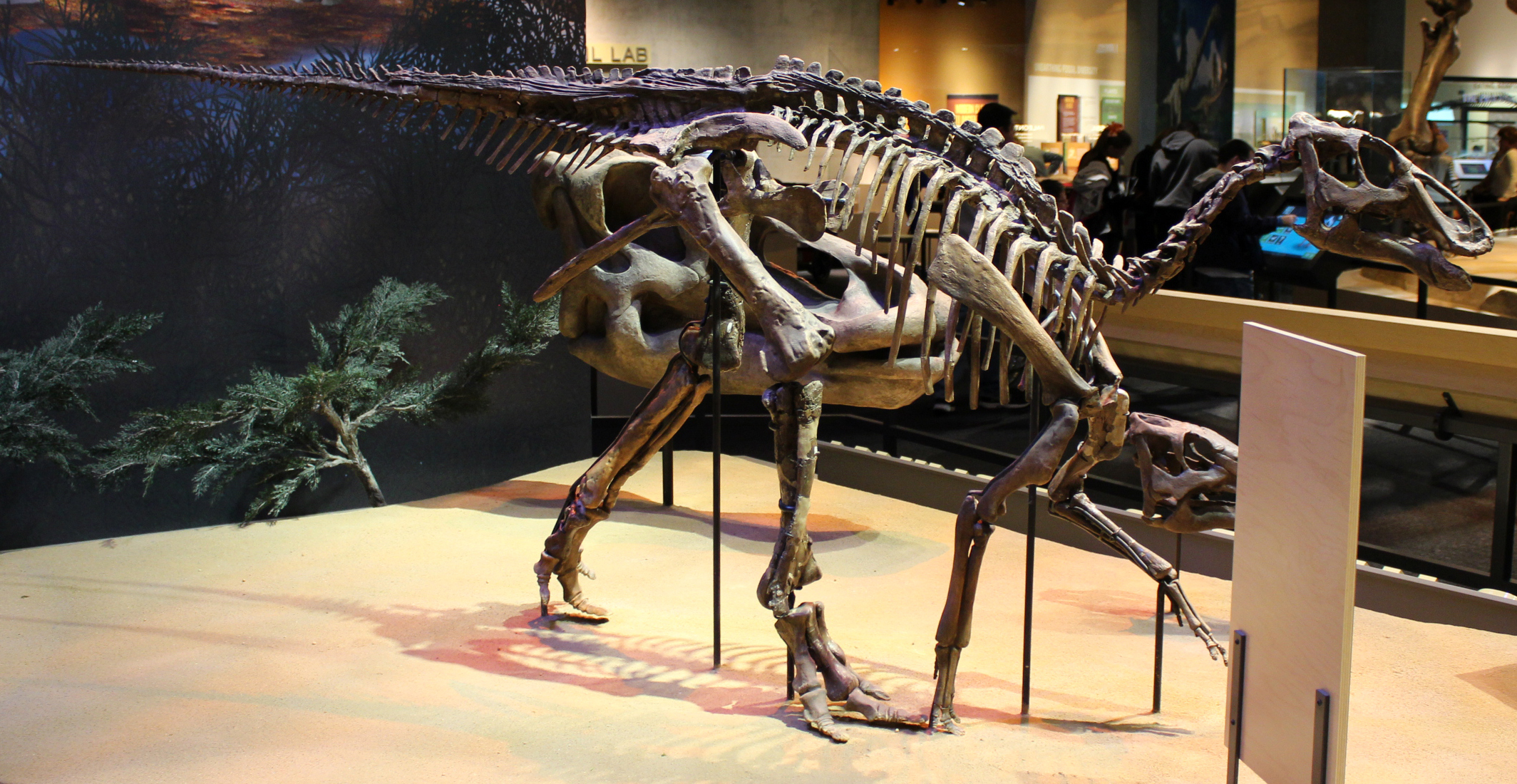
The discovery of dinosaur fossils in Alaska’s Prince Creek Formation revolutionized our understanding of these ancient creatures. These weren’t just random bones – they represented complete ecosystems of polar-adapted dinosaurs living in perpetual winter darkness for months at a time. Imagine herds of Edmontosaurus trudging through snow-covered landscapes, their massive bodies generating enough heat to survive temperatures that would kill most modern reptiles.
These Arctic dinosaurs developed remarkable adaptations. Some species grew larger than their temperate cousins, following the same biological principle that makes modern polar bears bigger than their brown bear relatives. Others developed enhanced metabolisms that allowed them to remain active even when temperatures plummeted below -20°C.
The Cretaceous Hothouse: When Crocodiles Ruled the Arctic
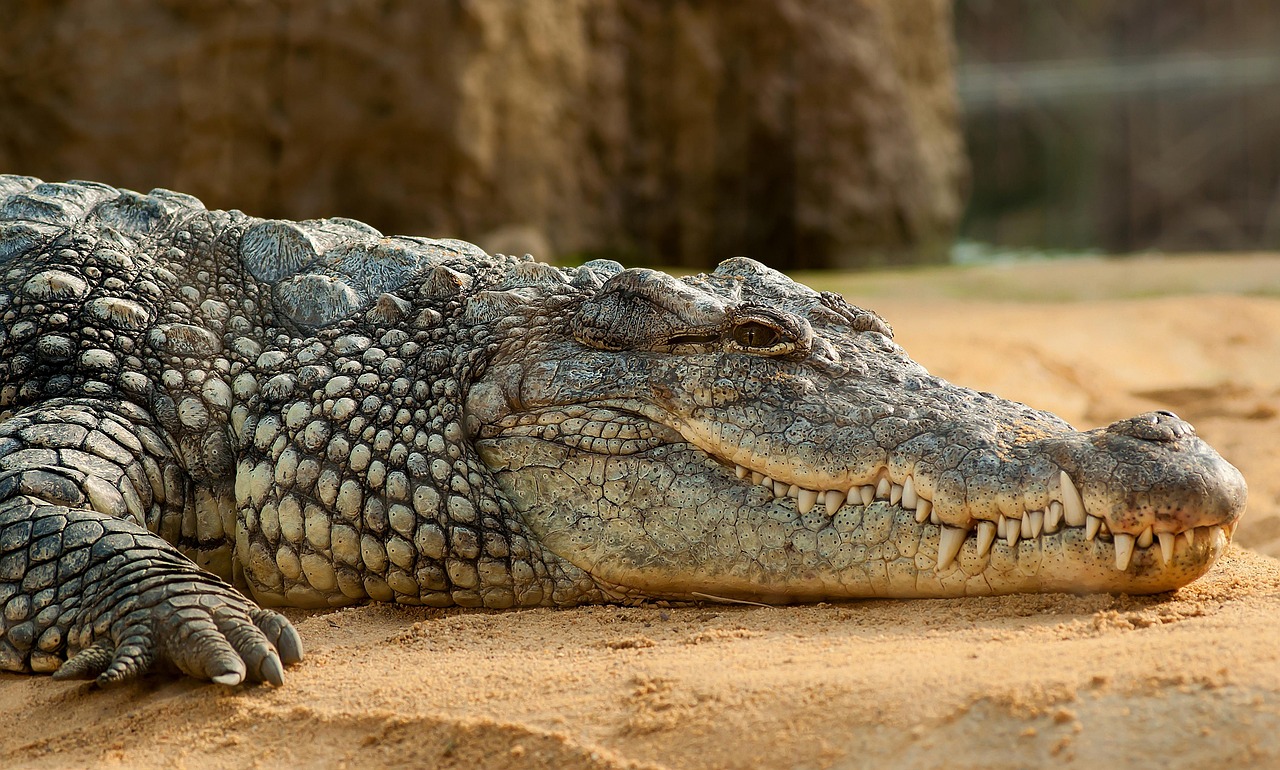
Fast forward to the Cretaceous period, and Earth had flipped into the opposite extreme. Global temperatures soared to levels that would make today’s climate seem positively chilly. Sea levels rose so high that much of North America was underwater, and crocodiles basked on beaches where the North Pole now sits covered in ice.
During this hothouse period, atmospheric CO2 levels reached nearly 2,000 parts per million – more than five times today’s levels. The result was a world without ice caps, where palm trees grew in Alaska and dinosaurs like Triceratops roamed forests that existed in complete darkness for half the year. This wasn’t just warm – it was a greenhouse world that challenges our understanding of how life can adapt to extreme heat.
The fossil record from this period reveals an explosion of diversity as life took advantage of the uniform warmth. Dinosaurs reached their largest sizes ever, with some sauropods growing to lengths exceeding 100 feet. Yet even in this tropical paradise, seasonal variations and regional cooling created pockets of climate diversity that kept evolutionary pressure intense.
Ice Ages and Dinosaur Extinction: The Cold Connection
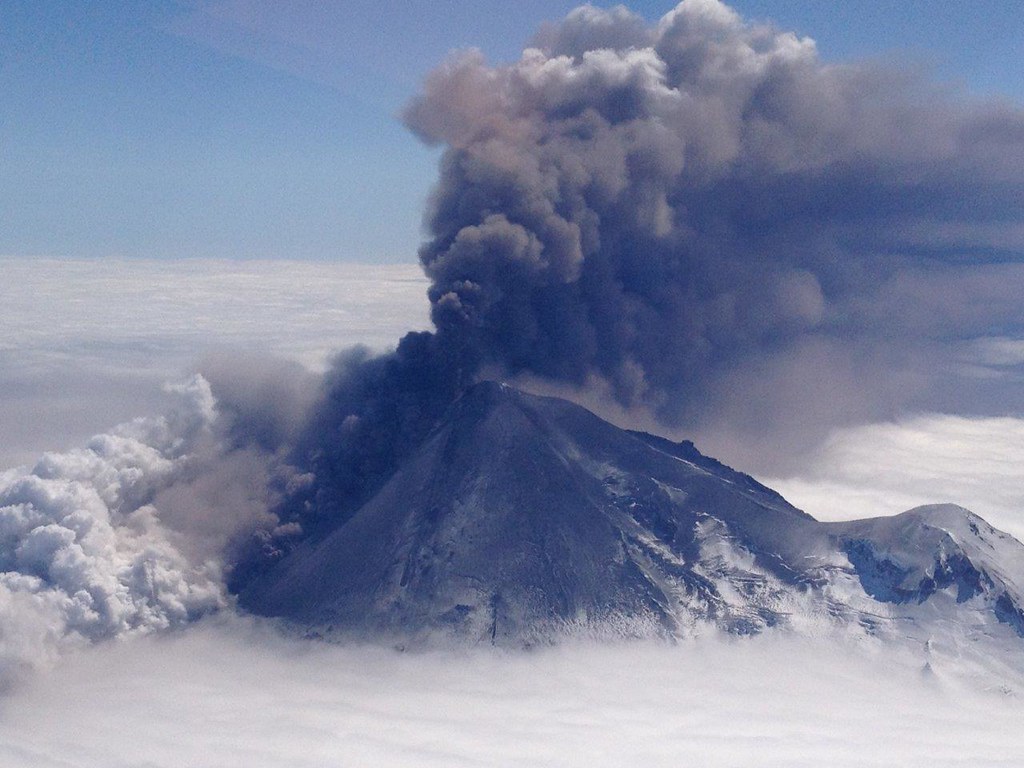
While most people blame an asteroid for ending the dinosaurs, emerging evidence suggests that climate change played a crucial role in their demise. In the final million years of the Cretaceous period, global temperatures began dropping dramatically. Volcanic activity in India created massive ash clouds that blocked sunlight, triggering what scientists call a “volcanic winter.”
This cooling trend may have already stressed dinosaur populations when the asteroid delivered its final blow. Cold-adapted species had a slight advantage, but even they couldn’t survive the rapid temperature swings that followed the impact. The combination of volcanic cooling and asteroid-induced climate chaos created a perfect storm that ended the age of dinosaurs.
Snowball Earth: When Ice Ruled Everything

Long before dinosaurs emerged, Earth experienced its most extreme climate event ever recorded. Around 650 million years ago, ice sheets advanced from the poles until they met at the equator, creating a frozen planet that resembled a cosmic snowball. Imagine Earth as a gleaming white sphere in space, with ice covering even the tropical oceans.
This “Snowball Earth” period lasted for millions of years, with average global temperatures plummeting to -40°C. Life survived in isolated pockets around volcanic vents and in thin layers of liquid water beneath the ice. The contrast with today’s climate is staggering – while we worry about a few degrees of warming, Earth once experienced cooling so extreme that it nearly sterilized the planet.
The end of Snowball Earth came as dramatically as it began. Volcanic activity pumped massive amounts of CO2 into the atmosphere, creating a greenhouse effect so powerful that global temperatures swung from arctic to tropical in just a few thousand years. This climate whiplash set the stage for the explosion of complex life that would eventually lead to dinosaurs.
Methane Burps and Dinosaur Summers
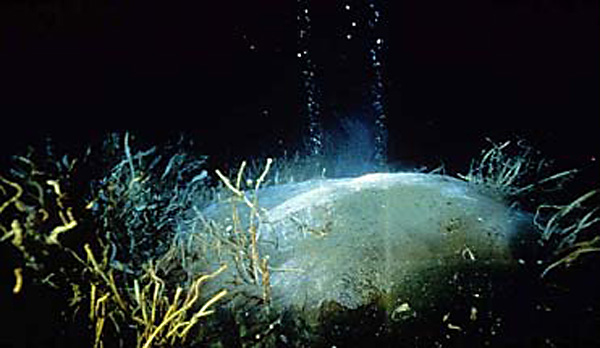
During the Jurassic period, Earth experienced what scientists call “methane burp” events – massive releases of greenhouse gases from the ocean floor that sent global temperatures soaring. These weren’t gradual changes but sudden spikes that could raise temperatures by 10°C in just a few centuries. Dinosaurs living through these events experienced climate shifts more dramatic than anything in human history.
The fossil record shows how dinosaurs adapted to these rapid changes. Some species migrated toward the poles to escape the heat, while others evolved different body structures to cope with the temperature swings. Sauropods, for instance, may have developed their long necks partly to reach higher, cooler air layers during extreme heat events.
The Triassic Furnace: Life After the Great Dying
The Triassic period began with Earth recovering from the most severe extinction event in its history. Temperatures soared to levels that made most of the planet uninhabitable, with some regions experiencing surface temperatures exceeding 60°C. This wasn’t just hot – it was a furnace world where only the most heat-adapted organisms could survive.
Early dinosaurs emerged in this crucible of extreme heat, developing physiological adaptations that would serve them well throughout their evolutionary history. Their efficient respiratory systems, similar to those of modern birds, allowed them to extract oxygen from air that was both hot and oxygen-poor. This gave them a crucial advantage over their mammalian ancestors, who struggled in the heat.
The Triassic heat also drove evolutionary innovation in unexpected ways. Plants developed new chemical defenses against the stress of extreme temperatures, while animals evolved more efficient cooling mechanisms. These adaptations would prove crucial when climate swings became even more extreme in later periods.
Antarctic Dinosaurs: Life in the Land of Midnight Sun
Recent discoveries in Antarctica have revealed dinosaur fossils that tell an incredible story of adaptation to extreme seasonal variations. These weren’t just cold-weather dinosaurs – they were creatures that lived through four months of complete darkness followed by four months of continuous daylight. Imagine being a dinosaur trying to hunt or feed when the sun never sets, or never rises.
The Antarctic dinosaurs developed unique behavioral adaptations to cope with these extreme light cycles. Some species appear to have hibernated during the darkest months, while others remained active by developing enhanced night vision or relying on other senses. The fossil evidence suggests that some dinosaurs even migrated seasonally, traveling hundreds of miles to escape the polar night.
These discoveries challenge our fundamental assumptions about dinosaur physiology. If some species could survive Antarctic conditions, they must have been warm-blooded or had metabolic systems far more advanced than we previously imagined. The implications extend beyond dinosaurs – they suggest that life itself is more adaptable to extreme conditions than we ever thought possible.
Volcanic Winters and Dinosaur Resilience
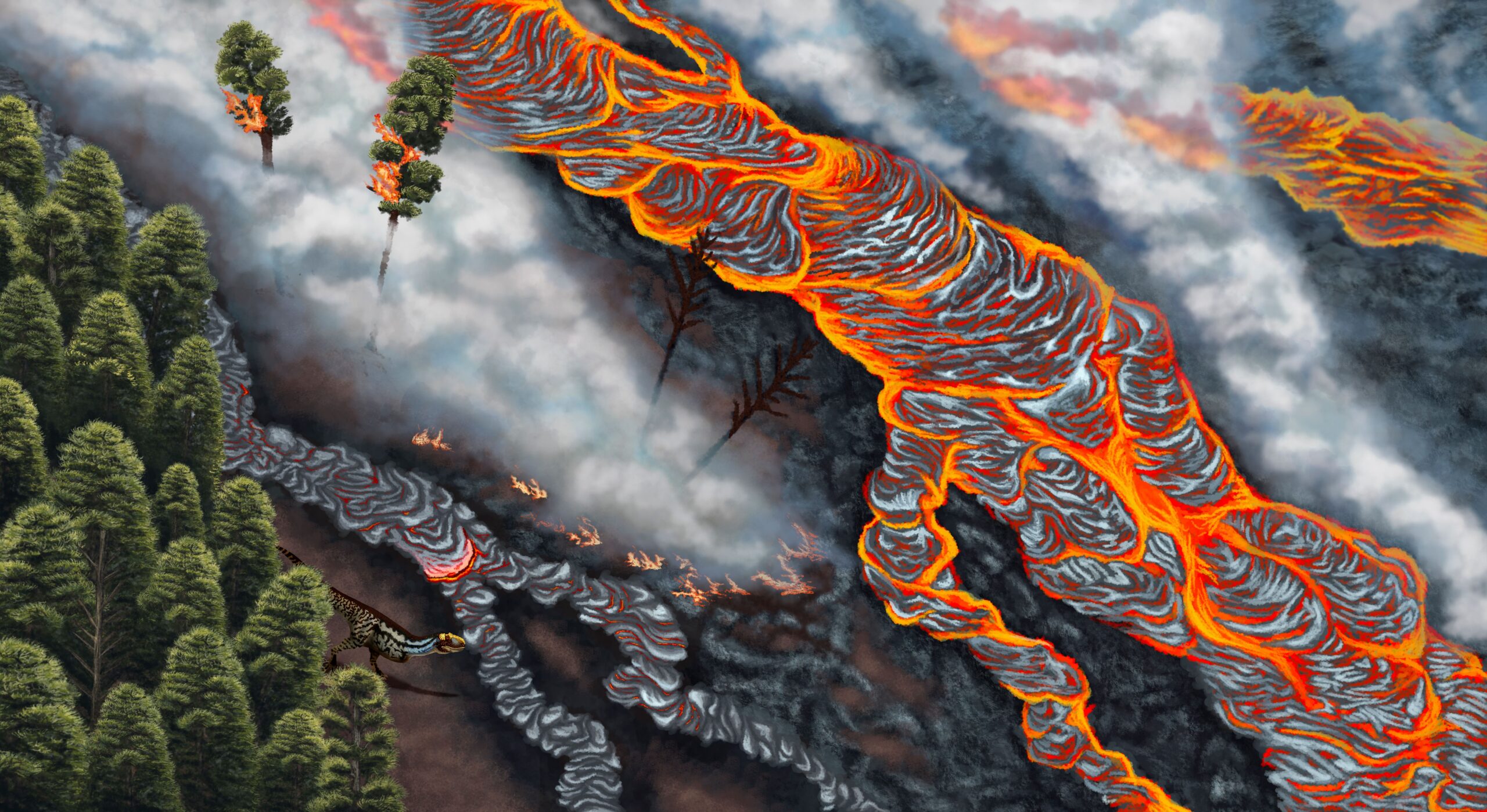
Throughout their existence, dinosaurs faced repeated “volcanic winters” – periods when massive eruptions blocked sunlight and sent global temperatures plummeting. The Deccan Traps in India created one of the most severe examples, spewing ash and sulfur compounds into the atmosphere for thousands of years. This wasn’t just bad weather – it was a climate catastrophe that lasted longer than human civilization.
Some dinosaur species showed remarkable resilience during these events. Small, feathered dinosaurs could burrow or seek shelter, while larger species may have entered states of reduced activity similar to hibernation. The fossil record suggests that dinosaurs actually became more diverse during some volcanic winter periods, as ecological niches opened up for species that could adapt to the harsh conditions.
The Jurassic Greenhouse: Paradise Lost
The Jurassic period represents perhaps the most stable and warm climate in Earth’s history. Global temperatures remained consistently high for over 50 million years, creating a greenhouse world where dinosaurs reached their evolutionary peak. Sea levels were so high that shallow seas covered most continents, creating a network of warm, tropical islands where life flourished.
This climate stability allowed dinosaurs to evolve into their most spectacular forms. Sauropods reached incredible sizes, with some species growing to over 100 feet in length. The warm, humid conditions supported lush vegetation that could feed these giants, while the stable climate meant that evolutionary pressures remained consistent for millions of years.
Yet even this paradise had its challenges. The high CO2 levels that maintained the greenhouse effect also made the atmosphere difficult to breathe for many species. Some dinosaurs developed enlarged lung capacities and more efficient breathing systems to cope with the changed atmospheric composition.
Ice Age Mammals vs. Dinosaur Ancestors
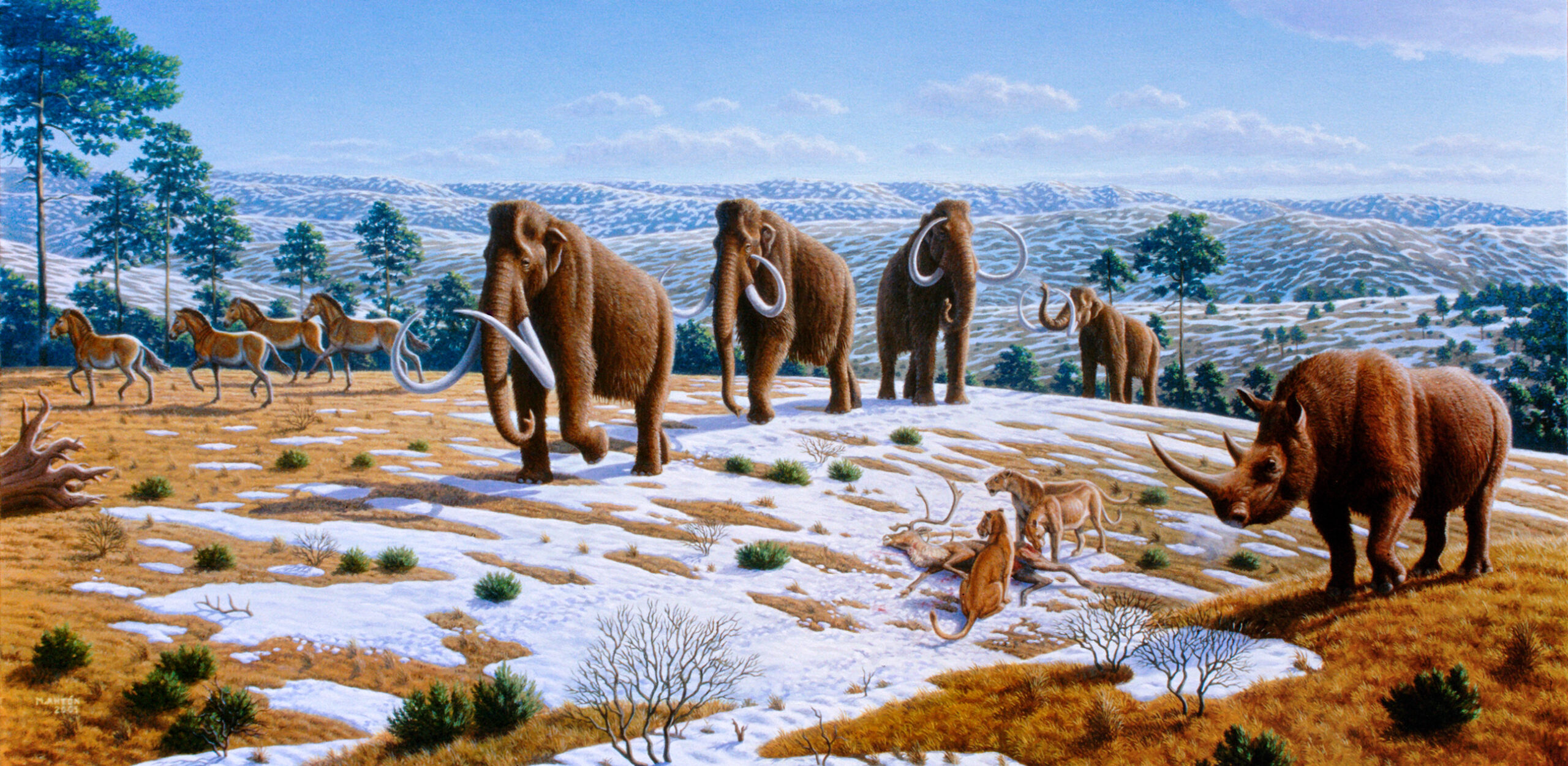
While dinosaurs dominated the Mesozoic era, their mammalian contemporaries were developing their own strategies for surviving climate extremes. During the Pleistocene ice ages, these early mammals faced conditions that would have challenged even the most cold-adapted dinosaurs. Mammoths developed thick fur coats and accumulated fat reserves, while saber-toothed cats evolved hunting strategies suited to frozen landscapes.
The comparison reveals fascinating differences in how different groups adapted to cold. Dinosaurs relied on behavioral adaptations like migration and social thermoregulation, while mammals developed physiological changes like improved insulation and hibernation. These different strategies explain why mammals ultimately survived the climate chaos that ended the dinosaurs.
Ocean Thermal Cycles and Marine Reptiles

The oceans during the dinosaur age experienced their own climate extremes, with thermal cycles that dramatically affected marine ecosystems. When global temperatures soared, ocean temperatures could exceed 35°C even in polar waters – hot enough to kill most marine life. During cooler periods, sea ice formed even in temperate regions, creating a completely different marine environment.
Marine reptiles like plesiosaurs and ichthyosaurs developed remarkable adaptations to these thermal swings. Some species could regulate their body temperature independently of water temperature, while others migrated vast distances to follow optimal thermal conditions. The fossil record shows that these creatures were among the most successful organisms at surviving climate extremes.
These ocean thermal cycles also influenced land-based dinosaurs through their effects on weather patterns. When oceans overheated, they generated massive storms and altered precipitation patterns across continents. Dinosaurs living near coastlines had to adapt not just to temperature changes, but to dramatically altered seasonal patterns of rain and drought.
The Final Freeze: Climate Chaos and Extinction
The last few million years of the Cretaceous period saw climate instability that would have tested even the most adaptable species. Volcanic activity, changing ocean currents, and shifting atmospheric composition created a world where temperatures could swing by 20°C within a few thousand years. This wasn’t just climate change – it was climate chaos that made long-term adaptation nearly impossible.
Dinosaurs showed signs of stress during this period, with some species developing dwarfism and others showing reduced genetic diversity. The climate instability may have weakened dinosaur populations enough that they couldn’t survive the additional shock of an asteroid impact. In this view, the asteroid didn’t kill the dinosaurs – it simply delivered the final blow to creatures already struggling with extreme climate stress.
The rapid climate changes also affected plant communities, disrupting food webs and creating cascading effects throughout ecosystems. Herbivorous dinosaurs found their food sources becoming unpredictable, while carnivorous species faced prey shortages. The combination of temperature stress and ecological disruption created conditions where even small additional stresses could trigger mass extinction.
The story of dinosaurs and climate extremes reveals a planet far more dynamic and challenging than we often imagine. These ancient creatures didn’t just survive in tropical paradises – they endured ice ages, volcanic winters, and greenhouse conditions that would challenge any modern organism. Their success lay not in finding perfect conditions, but in adapting to imperfect ones with remarkable flexibility and resilience. As we face our own climate challenges today, perhaps we can learn something from these ancient survivors who thrived through millions of years of Earth’s most extreme conditions. What would our own species need to develop to show such remarkable adaptability to a changing world?


